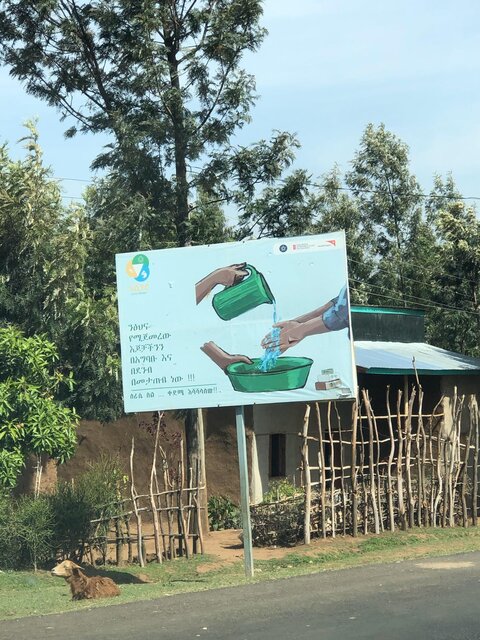The Geshiyaro Project: Why water, sanitation & hygiene are critical to achieve health for all

By Sahra Mohamed, Evidence, Measurement and Evaluation Analyst, Children's Investment Fund Foundation
As the world is gripped by the COVID-19 pandemic, many of us have a renewed appreciation of hygiene, in particular handwashing, and its ability to interrupt the transmission of disease and keep our communities safe. But what would we do if we had no water for handwashing?
The COVID-19 pandemic demonstrates the inextricable connection between water, sanitation and hygiene (WaSH) and health. We know that addressing environmental determinants of health reduces the transmission of disease and sustains the gains made through medical interventions. This is particularly true for the prevention and management of neglected tropical diseases (NTDs).
The association between WaSH and NTDs has been widely documented, with recent evidence suggesting that access to piped water, improved sanitation, and handwashing with soap, are associated with a 33–70% lower risk of soil-transmitted helminths (STH) infections. In the Wolaita Zone of Ethiopia, a new research initiative has been developed to understand whether WaSH and NTDs coordination can contribute to the interruption of STH and schistosome transmission.
With funding from the Children’s Investment Fund Foundation (CIFF), the Geshiyaro Project is assessing the optimal provision of interventions, including preventive chemotherapy with high population level coverage, together with WaSH and changes to public behaviour. The project has three intervention arms all of which will be implemented between 2019-2023:
1. Expanded Mass Drug Administration (MDA) and expanded WaSH in five districts: Arm One expands drug distribution beyond school aged children and treats entire communities at risk of schistosomiasis and STH. Communities in this arm also receive improved WaSH, including access to safe water for at least 85% of the population and basic sanitation facilities for at least 82% of the population. This includes building new shallow wells and public taps providing clean water, latrines, and health education to complement the improved infrastructure.
2. Expanded MDA and Ethiopian government’s WaSH programme in ten districts: Like Arm one, Arm Two will implement community wide treatment in addition to the Ethiopian government’s WASH programme.
3. Annual school-based MDA and Ethiopian government’s WASH: The third arm of the project maintains the status quo, providing regular MDA to school aged children, as well as the government’s conventional programme.
The expanded WaSH interventions in Arm One have the same targets as the government WaSH programme at an accelerated pace. The rationale for this is to understand the impact of WaSH on transmission break for STH and schistosomiasis, and use learnings to feed into the conventional WaSH programme.
Over the course of the programme, Arm One will scale up to achieve several key targets that the Ethiopia government’s WaSH programme is progressing towards: access to safe water for at least 85% of the target population; 82% access to improved basic sanitation; and white flag status as per the Ethiopian Government WaSH ODF targets.
To accelerate the uptake and ensure sustainability of the WaSH interventions, community ownership is being promoted and supported through enterprising WaSH business centres, where communities can take loans to purchase and install a basic improved latrine. Accountability, verification and incentives are being introduced through community leader-led total sanitation - an initiative that complements community-led total sanitation (CLTS), where community leaders commit to ensuring that that all households in their communities have access to a latrine. For those who cannot afford a basic improved latrine, community leaders are expected to support these households to construct a latrine using locally available resources.
Recognising that WaSH is a critical determinant of health, the new 2021-2030 WHO draft NTD Roadmap calls for increased coordination between WaSH and NTD stakeholders. This roadmap recognises that treatment alone may be insufficient to eliminate NTDs. To achieve its’ targets, the roadmap recommends strong collaboration and cooperation across many sectors, including WaSH and health. This is quantified in the WaSH indicators, whereby 100% of the population have access to and use improved basic sanitation and handwashing facilities, including soap and water, by 2030.
As a donor, CIFF in close collaboration with the Government of Ethiopia, World Vision Ethiopia, the London Centre for NTD Research (LCNTDR) and other stakeholders, is proud to support the Geshiyaro Project. Reducing the number of people affected by NTDs cannot be achieved without addressing the determinants of health, including WaSH. By taking the long view and investing in comprehensive, cross-sectoral programmes, we can achieve better health outcomes, which will lead us one step closer to a world free of NTDs.